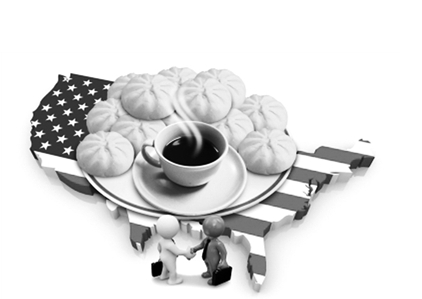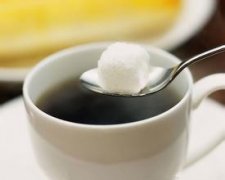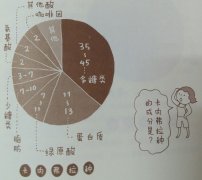What do you think of the newest mix of steamed buns with coffee?

Tianjin GouBuLi Group, a Chinese time-honored brand with a history of more than 150 years, has announced that it has successfully won the permanent right to use Australia's largest coffee chain in China. This means that GouBuLi, the representative of traditional Chinese food and beverage, has officially entered the field of coffee chain.
When everyone was excited about the mix of "drinking coffee with steamed buns", and when some people were confused, the person in charge of GouBuLi responded: "in the future, steamed buns and coffee will operate independently. There will be no scene of drinking coffee in a steamed stuffed bun shop or eating steamed buns in a coffee shop." What's more, numerous industry experts said: "it is necessary to be completely successful-going to the dog is unreasonable."
Steamed buns with coffee, deep inside, is coffee beans, pork, vegetables, or bean paste, sesame, flour and other dry ingredients, there seems to be no conflict. It's not unusual for coffee shops to sell steaks. Of course, people say that coffee is not eaten with steak, it is an after-dinner drink. There is nothing wrong with eating steamed buns before drinking coffee, or coffee before steamed buns. In addition to the nutritional value, there are vegetables, meat and staple food in steamed buns, which contains vitamins, protein, dietary fiber and other nutritional elements; coffee in addition to moisture, there are sugars, fat, potassium, crude fiber and so on. The two are in line with the golden matching principle of salty, sweet, vegetarian and dry breakfast. Nutritionally, this mash-up is still scientific.
But for no reason, an expert in the food industry said: "to put it simply, coffee is slow, slow in culture, casual and casual, but both Goubao and Quanjude require fast." "this combination of Chinese and Western is a mixed blessing for GouBuLi: the good news is that Chinese time-honored brands have found a new direction outside steamed buns; the worry is that the grafting of the two brands does not have any advantage." People in the industry must have business insights, but is the steak fast or slow? you can't wait until it's cold, right? There seems to be no difference between steamed buns and steamed buns in this respect. Whether you have the advantage of grafting or not depends on your original intention when you violently pursue Bai Fu Mei's "Gaolue".
In fact, the grafting disadvantages that experts worry about are the differences between Chinese and Western cultures, as well as the distinct "temperament" and consumer groups represented by coffee and steamed buns. In fact, to put it bluntly, it is the difference between petty bourgeoisie, middle class, business and public consumption, and between the middle and low classes. The coffee shop should be a retro leather sofa, strong aroma of coffee, soothing jazz music, soft service, quiet diners, serving dishes one by one. And the steamed stuffed bun shop, noisy, hot, there are migrant workers, as well as uncles and aunts.
Starbucks is very successful in China, it is said to have formed a coffee religion: to form a community of people with similar life style and social identity. In this sense, there is absolutely no possibility of grafting between "GouBuLi" and "Gaoleya". But Starbucks' original idea of success was to create a relaxed and warm atmosphere. Starbucks sells not just coffee, but the environment.
When it comes to the environment, perhaps the biggest disadvantage of our traditional food and beverage is here. Hangzhou Xinfeng steamed stuffed bun has just been there. I went to the hall on the second floor to eat, and as a result, the steamed buns had to be bought separately in line downstairs. I wrote two tickets for wonton and fans, which were small and thin, and they fell to the ground when they were handed over, and to make matters worse, they fell right into the sewer gap, which was still in the store. You have to find a tray to get rid of the fans and wonton, but when you touch it, it's all greasy. Of course, the taste of steamed stuffed bun wonton is really good, and the price is a little embarrassing, but wouldn't it be better if health services were in place? Decoration is not luxurious, there is no sofa, piano, WIFI, in fact, it is not so important.
Can the grafting point of coffee and steamed buns be environment and service?
Since coffee shops can sell snacks and buy fried rice, why do we have to "de-steamed stuffed bun" and "go to the dog"? In reality, it is estimated that no one does not know that "Gloria" and "GouBuLi" have handled permanent marriage registration not only under vows of love and love, but also guaranteed by the legal system. Do we have to say again and again at the door of "Gloria" that "we have a dime relationship with dogs"? Now I'm really worried. Is it easy for a person to erase his background?
In fact, there are no cliffs in the grafting of nutrition and culture between steamed buns and coffee. Cliffs are those deep-rooted positions in the brain. Steak is high-end, and steamed buns are vulgar, as for ham sausage, lion head is simply vulgar. Actually, it's all a mouthful. And choice is also the freedom of customers. In fact, "Colorado" is also a popular brand, the price is about 25 to 40 yuan, and does not necessarily need leather sofas and jazz.
Important Notice :
前街咖啡 FrontStreet Coffee has moved to new addredd:
FrontStreet Coffee Address: 315,Donghua East Road,GuangZhou
Tel:020 38364473
- Prev

Look at the big world of coffee beans. Highland coffee is superior.
The Buddha said, one flower, one world, one leaf, one Bodhi. Replaced with a coffee bean, still the same. Looking at this pure black liquid, it took a year of growth, harvesting, production, baking, grinding, extraction, and finally condensed into that mellow taste. It is like all the things that have been polished by time and hands, such as red wine, such as jade, in the small
- Next

Figure out what ingredients raw coffee beans are made of.
In raw coffee beans, moisture accounts for 9% to 13%, and moisture has little effect on the aroma of coffee beans. Later, I will introduce the content of various ingredients (calculated according to the state of dried raw beans). When the share of these ingredients changes, the flavor of coffee beans will also change greatly. The most abundant ingredient in polysaccharide raw beans is polysaccharides, accounting for 35% and 4%.
Related
- Guji coffee producing area of Guji, Ethiopia: Humbela, Shakiso, Wulaga
- What is the most expensive variety of Qiloso in BOP multi-variety group?
- How to store the coffee beans bought home?
- Why are Yemeni coffee beans so rare now?
- Ethiopian Sidamo all Red Fruit Sun Sun Santa Vini Coffee beans
- SOE is mostly sour? What does it mean? Is it a single bean? what's the difference between it and Italian blending?
- Is Italian coffee beans suitable for making hand-brewed coffee?
- How to choose coffee beans when making cold coffee? What kind of coffee beans are suitable for making cold coffee?
- Just entered the pit to make coffee, what kind of coffee beans should be chosen?
- Can only Japan buy real Blue Mountain Coffee? What are authentic Jamaican Blue Mountain coffee beans?

